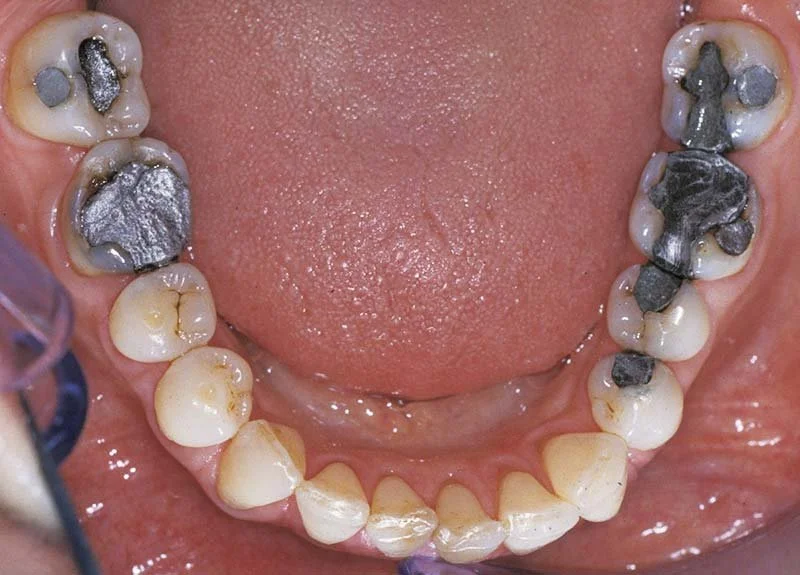HEAVY METAL TOXICITY
Multiple heavy metals exist in the earth's crust, and the myriad undertakings of human activities result in practically everyone being exposed to these elements in the air, water, and food supply. As long ago as 2007, the World Health Organization stated that heavy metals accumulated in the environment ". . . are associated to different degrees with a wide range of conditions, including kidney and bone damage, developmental and neurobehavioral disorders, elevated blood pressure, and potentially even lung cancer."
If you have any of the following symptoms, then heavy metal toxicity could be affecting your health:
Tremors
Headaches
Infertility
Mental "fogginess"
Anxiety and depression
Deteriorating eye health
Memory problems
Poor kidney function
Digestive problems
Tingling sensations in the hands, feet, and/or around the mouth
Poor immune function (recurrent infections, an autoimmune disease)
The heavy metals in the environment that are most commonly found to be linked to adverse health problems include:
Mercury
Lead
Cadmium
Arsenic
MERCURY
Mercury is a silvery, metallic, very malleable, liquid element that is very toxic, even in extremely small amounts. Mercury is ubiquitous in the environment, partly due to the 50 tons of it being released into the atmosphere annually in the United States (yes, that's 100,000 POUNDS every year) from burning coal in coal-fired power plants.
The mercury vapor in the air can be inhaled, but it also falls to the earth with precipitation, contaminating streams, rivers, lakes, and ultimately the oceans. Bacteria in these bodies of water change what is called "inorganic" mercury into "organic" methylmercury. The cascading problem that results is that methylmercury is far more readily absorbed into the body than is inorganic mercury.
So, when we eat fish, shellfish, and other species from bodies of water containing methylmercury, we can become toxic.
Mercury is also found in dental amalgams - "silver fillings" - that dentists have used for over a century to repair cavities. Dental amalgams are usually one-half mercury, with the remainder consisting of silver and tin. When we chew or drink hot beverages, a small amount of mercury vapor from a filling can be released, which we then inhale and absorb.
Mercury has been used in vaccines as a preservative, such as in the measles/mumps/rubella vaccine, although this is a practice that the pharmaceutical companies have largely eliminated. The brain and nervous system are especially sensitive to long-term mercury exposure, and babies are the most sensitive to mercury's negative health effects.
LEAD
Lead is less ubiquitous in the environment than mercury is, mainly because lead is no longer being used as an additive in gasoline. Lead is also no longer being used as a paint additive. But homes built before the 1978 ban can still contain some lead-based paint.
Removing lead-containing paint without using the proper personal protective equipment can result in lead toxicity (this author, although embarrassed to admit it, did just that many years ago). Lead is still being used in the manufacture of car batteries. Individuals can also come in contact with lead from old lead water pipes or the lead solder used to weld copper water pipes.
The soil and water in areas where mining activities have taken place can become very contaminated with lead. Children growing up in these areas are the most vulnerable to lead's harmful effects, which can result in severe developmental delays, nervous system damage, and even death.
CADMIUM
Used in battery manufacturing and other industries, cadmium exposure can damage the kidneys, lungs, and liver. Like mercury, lead, and the mineral zinc, cadmium occurs in the earth's crust and occurs naturally in ores with lead and zinc.
Tobacco smoking will expose a smoker to cadmium because the tobacco plant will concentrate cadmium in the environment, such as from soil. Rice also tends to accumulate cadmium as well, especially if the rice is grown in areas that formerly grew tobacco, as in some areas in the southeastern United States.
ARSENIC
Arsenic is present in the environment from agricultural runoff, cigarette smoke, and its former use in pressure-treated wood. Chronic exposure to arsenic can initiate cancers, cognitive dysfunction, diabetes, and heart and lung damage.
TESTING FOR HEAVY METALS
There are several ways to test for heavy metals, using hair, urine, serum, and blood spot testing. Test kits can be mailed to you to do at your convenience. Please get in touch with our office for more info.
HEAVY METAL DETOXIFICATION
If you have Mercury amalgams, we recommend removal by a biological dentist who is IAMOT certified. We have a protocol for both pre and post-amalgam removal. Timing is everything, and sometimes, it is not wise to remove amalgams without adequate preparation and detox, as premature removal may result in autotoxicity and worsening of symptoms.
For detoxification, use a combination of heavy metal binders, such as natural fulvic/humic shale acids, charcoal, clay, cilantro, chlorella, and zeolite. Other nutrients found to be helpful in this regard include modified citrus pectin, lipoic acid, and sodium alginate. Homeopathics can also be helpful. Heavy metal binders combined with a foot bath detox, coffee enemas, lymphatic, kidney, and liver supports.
Periodically check for heavy metals to monitor progress.
For more information, please contact our office.

